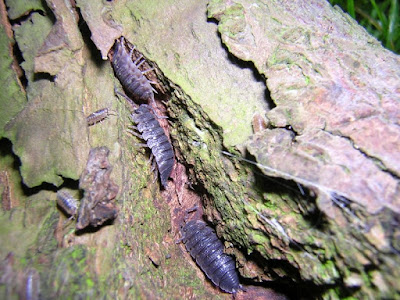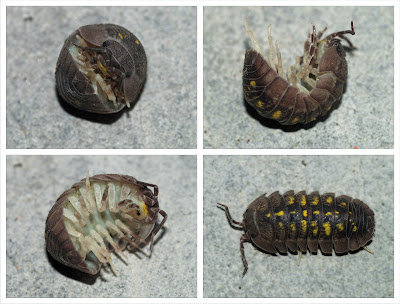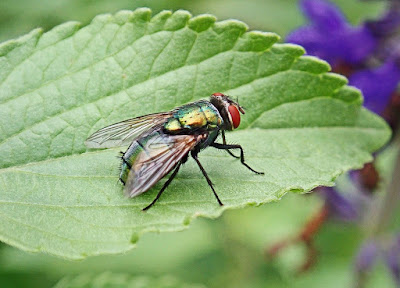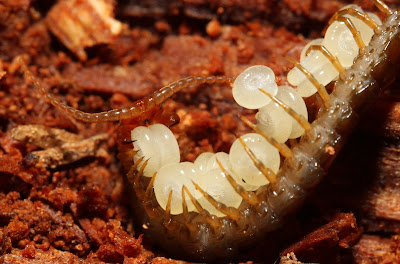Macroorganisms physically decompose organic matters for food. They attack and cut the organic matter in smaller pieces, increasing more surface area for the the upcoming chemical decompose by bacteria. They form a food web inside the compost pile. If you see these animals in your pile, don't panic, they are just working.
Mold Mites
Mold mites feed on yeasts in organic debris. They also work hard to degrade organic matters in compost pile. Don't try to find them because you can't see them with naked eyes.
 |
| Mold mite by By United States Department of Agriculture |
Springtails
Springtails chew on decomposing organic matters, bacteria, fungi or insect feces in composting pile. If you really want to see them, they measure from 1.6 ~6.3 millimeter in length. Because they can jump as high as 7~10 centimeters, they are mistaken for fleas, but they don't carry the pest and spread no disease.
 |
| Springtail By U. Burkhardt |
Sowbugs
They feed on plant tissues so the organic matters in compost pile will accommodate them for while. They are relative to shrimp and crayfish. They breathe with gills so you are likely to find them in place with high humidity. Adult sowbugs grow up to 10 millimeters.
 |
| Sowbugs, CC BY-SA 3.0, |
Pillbugs
Similar to sowbugs, but they don't have a tail-like appendage. They can roll into a ball. They have a common name called "Roly-poly".
 |
| Pillbugs By Alvesgaspar |
Nematodes (Roundworms)
They eat decaying plant tissues, bacteria, fungi and their cousins. They can only move in the soil when there is a film of moisture on the surface of soil particle. When it's dry, they go dormant.
 |
| Par Bob Goldstein, Travail personnel, CC BY-SA 3.0 |
Millipede
Millipedes feed on moist decaying plant matter in your pile.
Centipede and her babies...
Centipedes only feed on living insect and larvae. They grasp their prey and inject venom into its body. They use your composting pile as hunting ground. It's better to leave them alone because they bite human. Though their bites are rarely life-threatening, still painful. If the victims has allergic reaction to venom or are small children, consult your doctor right away.
Beetles
Their baby is grub. Grubs feed on rotting organic matter. Adult beetles eat organic matter and also hunt for maggots, mites and nematodes. Several species also eat snail and slug.
Snails
If you live in warm and humid climate, you may come across them often. They feed on fresh plant tissues.
Slugs
Slug has no hard shell, but it has similar characteristics to snails.
Ants
Ant eats everything in your compost pile. Most soil critters who decompose organic matters like moisture, except for ant. Ant prefers dryness. If you see a prevalent population of ant in your composting pile, your pile may be too dry.

Files
Adult flies feed on organic matter and deposit their eggs in where food is ready for their hatching babies (maggot). Maggot is eaten by mite and beetles. It's a part of food web.
 |
| Fly |

Earthworms
Earthworm is our all-time favorite soil decomposer. They eat and digest organic matter, depositing their rich waste, call castings.
 |
| Earthworm |














0 Comments